Saturday, December 18, 2010
In the United States, few duck eggs are eaten. In other parts of the world, however, duck eggs are a major portion of the diet. Over 65% of all duck eggs are produced in China and over 90% of all duck eggs are produced in Asia. Interestingly, waterfowl increased their share of consumed eggs in the world from 6.57% in 1991 to 7.02% in 2007. So the growth of duck eggs is faster than chicken eggs in the world! Take that, chicken farmers!
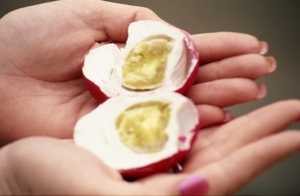
Duck eggs are eaten fresh, salted, thousand year old and balut. If you have an interest in any of these products, visit our website for pricing and shipping information. In this blog I will discuss salted duck eggs - future blogs will cover balut and thousand year old duck eggs.
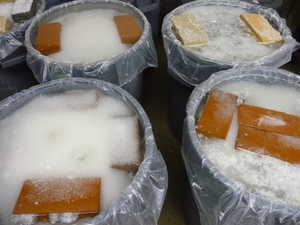
Salted duck eggs are prepared by one of two methods. The original method was to mix salt and clay or charcoal and pack that around a fresh duck egg. The most common method in the United States is to immerse a fresh duck egg in a salt brine. Any plastic or glass container will work but we salt our duck eggs in plastic garbage cans. Fill it ¼ full of water and then add eggs until they are about 4” from the top. As the salt water will make them float out of the water, you need to place some type of plastic panel or screen on top of the eggs and place several bricks on them to ensure all eggs are held down in the water. Then you pour a bag of water softener salt over the eggs and then finish filling your container with water. You must make sure there are always salt crystals in the water. If there are no crystals, add more salt. The eggs must stay in the water for 4-5 weeks depending on the temperature. The salt permeates the egg faster if the water is warm. Once I salted some eggs in a plastic bucket in an operating incubator. It took less than 2 weeks.
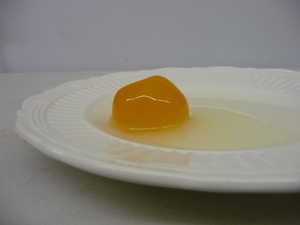
It is interesting how the salt changes the proteins in the egg. After salting, but before cooking, the yolk is hard, like a ball of modeling clay, whereas the albumen is very runny. The color of the yolk darkens as the salt permeates it. If the salting process is not complete, the middle of the yolk will be light yellow. It is complete once the entire yolk has darkened. If the yolk is completely salted, you can squeeze a drop or two of oil out of it. Note that the salt does not add any oil or fats, the chemical properties of the yolk has changed to allow the oils to be separated more easily from the proteins. The yolk also has a different texture after salting. It is slightly more “grainy”. The eggs are always boiled prior to eating.
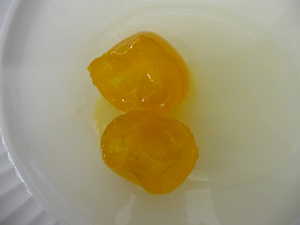
This is an uncooked, salted duck egg yolk that has been cut in half. Note that there is very little light yellow in the center of the yolk.
The Filipino culture is to dye the egg a deep maroon color after boiling. Why? Maybe the red color is good luck and it helps them differentiate their salted eggs from balut (partially incubated eggs).
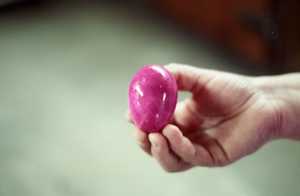
Salted eggs are consumed in a variety of ways. Filipinos typically cut them up and put them on tomatoes or salads. Another popular use of salted duck eggs is for the autumn Moon Cakes where a salted duck egg yolk is inserted in a special pastry.
This may be a way for you to sell some of your duck eggs. Inquire with some of the Asian restaurants or grocery stores in your area. Focus on Thai, Chinese, Indonesian, Filipino and Vietnamese stores/restaurants as these are the top per capita consumers of duck eggs in the world. The per capita consumption in Thailand is over 63 eggs per year!
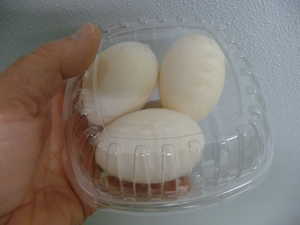
Our main distributor puts three uncooked, salted eggs in a clear plastic container for retail sales. If you sell to Filipino food stores, you can probably sell to them in flats as they prefer to cook and dye the eggs prior to sale.
Any sized duck egg can be salted. Our best egg laying ducks, the Golden 300 Hybrid and White Layer, produce an average sized duck egg that would work very well for the salted egg market.
Have I eaten a salted duck egg? Yes - and they are rather tasty. Try one!
Any sized duck egg can be salted. Our best egg laying ducks, the Golden 300 Hybrid and White Layer, produce an average sized duck egg that would work very well for the salted egg market.
Have I eaten a salted duck egg? Yes - and they are rather tasty. Try one!